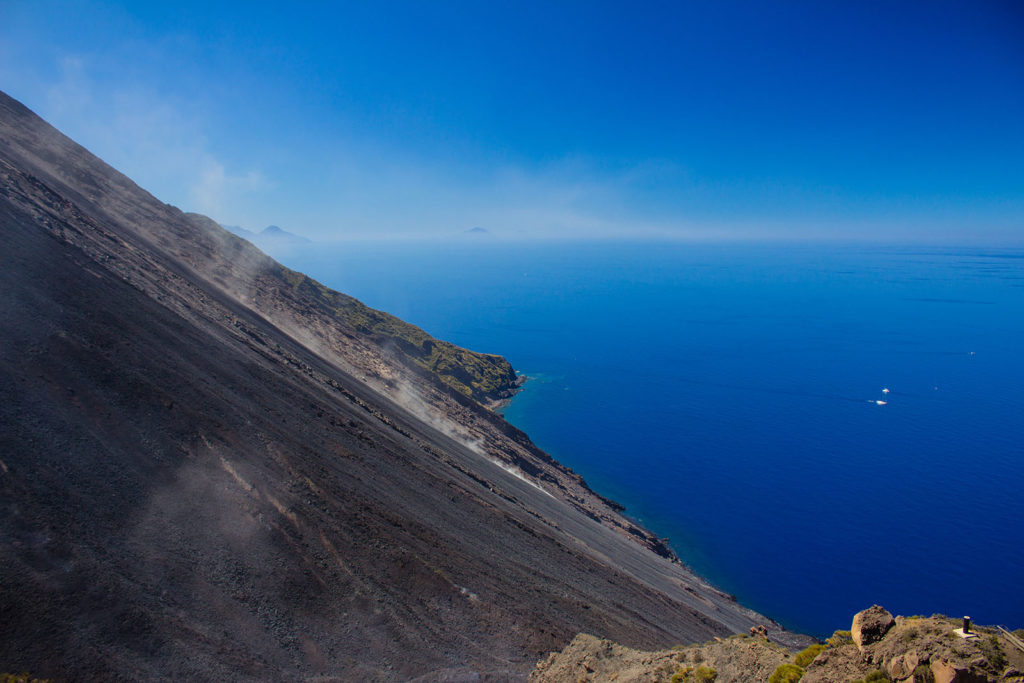The summit craters of Stromboli are an incredible experience, but they are not suitable for everyone. An excellent alternative to admiring Stromboli is to head for the Sciara del Fuoco. From the centre of the village of Stromboli follow the only lane in a counter-clockwise direction and climb up to an altitude of 200 metres. Here you will face the south-west flank of Stromboli towards an escarpment that descends with a 30° slope from the summit craters to the sea, universally known as the Sciara del Fuoco, a talus scree of fire.
It is where all the products of the summit crater explosions have accumulated over the last thousand years, especially lapilli and ash. As far as volcanic bombs are concerned, it is quite common, even during the day, to see glowing balls being thrown from the summit craters then beginning to roll down the Sciara del Fuoco until they reach the sea.
 Another resting place is located 400 metres above sea level, the maximum limit to climb the volcano without being accompanied by a volcanological mountain guide. From here you will appreciate the beauty of the Sciara del Fuoco even more, and above all, you will have a better view of the north-west face of the summit craters.
Another resting place is located 400 metres above sea level, the maximum limit to climb the volcano without being accompanied by a volcanological mountain guide. From here you will appreciate the beauty of the Sciara del Fuoco even more, and above all, you will have a better view of the north-west face of the summit craters.